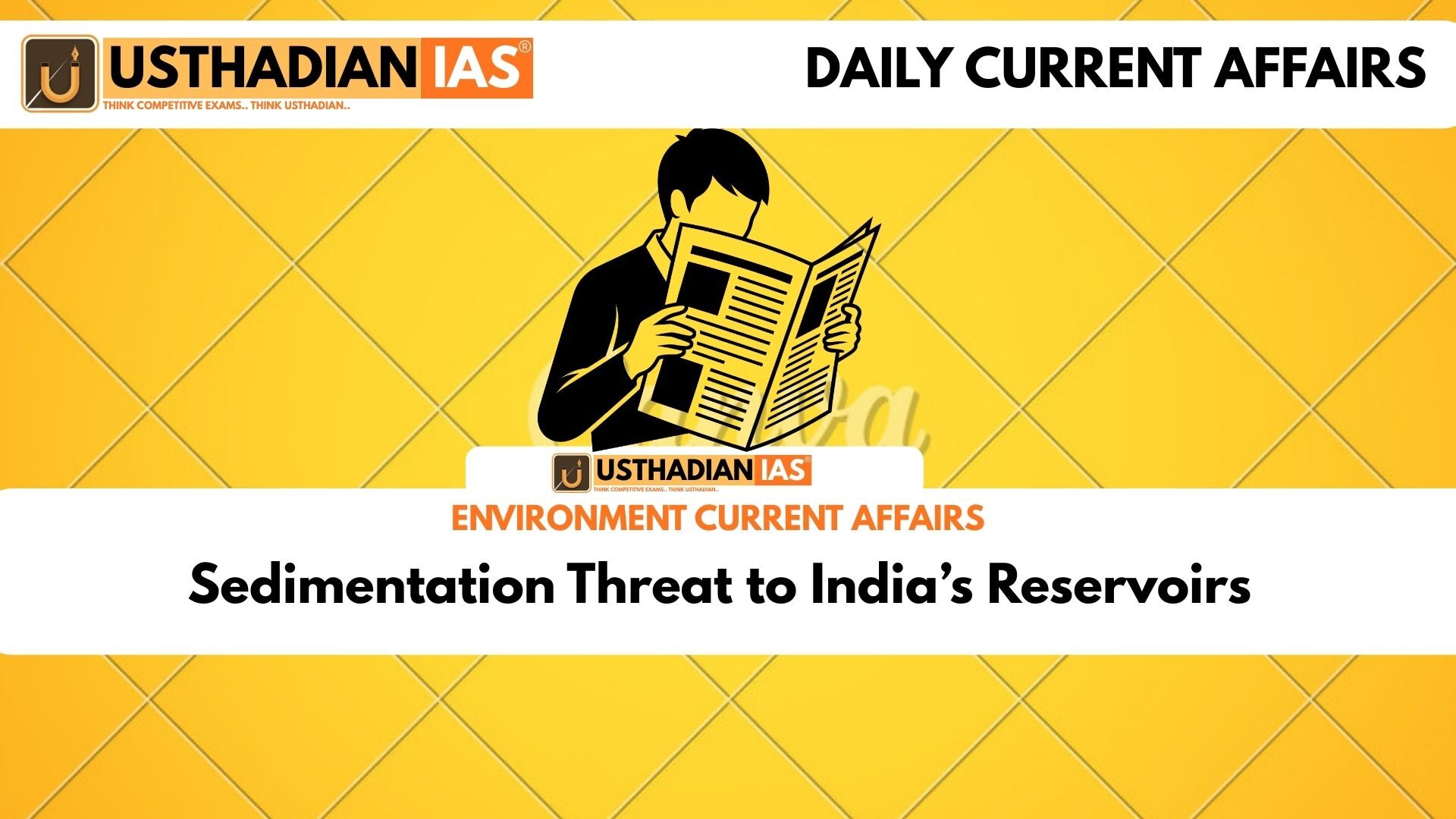Findings of the recent study
Sedimentation Threat to India’s Reservoirs: A recent IISER Bhopal study has revealed that India’s large reservoirs are rapidly losing their storage capacity. The analysis covered more than 300 reservoirs with capacities above 100 million cubic meters.
The study concluded that dams in India have already lost nearly 50% of their storage capacity due to sedimentation. This directly impacts power generation, flood management, and drought mitigation.
Static GK fact: India is the third largest dam-owning nation after China and the USA.
Regions at highest risk
By 2050, reservoirs in the Himalayan belt, Narmada-Tapi basin, Western Ghats, and Indo-Gangetic plains will face severe storage loss. These regions are vulnerable due to high soil erosion, deforestation, and intense flooding events.
Sedimentation threatens both agricultural productivity and urban water supply, particularly in densely populated river basins.
Key causes of sedimentation
The primary causes identified include:
- Agriculture-driven soil erosion caused by unscientific land use
- Deforestation in catchment areas reducing natural soil binding
- Intense flooding, which accelerates silt deposition in reservoirs
Static GK Tip: The Bhakra Nangal Dam on the Sutlej River is one of India’s largest multipurpose projects, but it too faces sedimentation challenges.
Safety concerns of dams in India
India has around 5,700 large dams, but many face operational risks. About 80% of these dams are already 25 years old, raising concerns of ageing infrastructure.
Many are located in seismically active zones, creating risks during earthquakes. Additionally, poor financial health leads to irregular maintenance and upkeep, further weakening structural safety.
Policy and technological interventions
Ensuring dam safety requires modern technology and proactive planning. Measures include decommissioning ageing dams, introducing real-time monitoring systems, and adopting sub-surface dams like those in Japan.
Static GK fact: The Hirakud Dam in Odisha, built in 1957, is one of the world’s longest earthen dams, highlighting India’s long history of dam construction.
Initiatives to strengthen dam safety
Several initiatives are being implemented for safer water storage infrastructure:
- Dam Safety Act 2021 – Provides for surveillance, inspection, operation, and maintenance of dams.
- Dam Rehabilitation and Improvement Project (DRIP) – Supported by the World Bank to modernize ageing structures.
- National Centre for Earthquake Safety of Dams – Focuses on structural and seismic safety.
- Digital tools like DHARMA (Dam Health and Rehabilitation Monitoring Application) and National Register of Large Dams (NRLD) are being used to track dam health.
The way forward
The sedimentation crisis highlights the urgent need for catchment area treatment, silt management technologies, and policy interventions. Without immediate action, India’s water security, power supply, and disaster resilience will face increasing stress in the coming decades.
Static Usthadian Current Affairs Table
Sedimentation Threat to India’s Reservoirs:
| Topic | Detail |
| Study conducted by | IISER Bhopal |
| Dams covered in study | 300+ with over 100 million cubic meters storage |
| Storage loss due to sedimentation | Nearly 50% |
| High-risk regions | Himalayas, Narmada-Tapi basin, Western Ghats, Indo-Gangetic plains |
| Major causes | Soil erosion, deforestation, flooding |
| Total large dams in India | Around 5700 |
| Global ranking in dam ownership | 3rd after China and USA |
| Age of dams | 80% more than 25 years old |
| Key law | Dam Safety Act 2021 |
| Key project | Dam Rehabilitation and Improvement Project (DRIP) |








